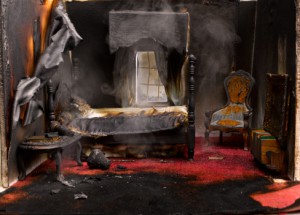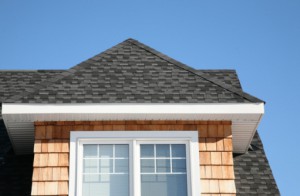Beat the Heat: Flame-Resistant Roofing
May 19, 2014 1:51 pmFor a state who gets its fame from being in Tornado Alley, Oklahoma doesn’t always come to mind when you think of “wildfires.” However, with half of the state currently in a burn ban and several counties already feeling the damage of the fires these past few weeks, wildfire safety is a priority. When it comes to protecting you and your home, we’re here to help.
Fire Basics
There are quite a few simple things you can do to ensure your home is relatively safe from any wildfires. Here is the skinny list on what to do:
- Be sure your address is clearly visible from the street. If you have trouble seeing your address, chances are good that emergency crews won’t be able to, either.
- Clear all debris and brush from your yard. Fallen leaves, sticks, trash, and anything else that could potentially feed a fire should be removed from your yard as often as possible. That means cleaning out the gutters, as well!
- Keep up with your landscaping. Trees should be trimmed back at least ten feet from your home, and grass should be no higher than four inches. It’s also smart to avoid planting any tall shrubs next to your home; if you have a woodpile, it should be kept away from the home and covered in flame-resistant material.
- Finally, make sure the inside of your home is well prepared with fire extinguishers, sprinklers, and smoke alarms that are all up-to-date and operable.
Fire-Resistant Roofing
If you’re currently building your home from the ground up, you have the benefit of choosing fire-resistant materials all the way from the foundation up. However, that isn’t a luxury most Oklahomans are afforded: sometimes the easiest answer is to replace your roof with a flame-resistant, eco-friendly roof. In some cases, this could result in refunds or tax breaks, so be sure to check with your insurance agency before upgrading.
Flame-resistant roofs come in all shapes and sizes, and can be reinforced with a roofing sealant as recommended. Naturally, roofs need to be installed with the proper fire-code-compliant underlayments to perform at its best. Safety doesn’t have to sacrifice style, either: here is a list of roofing materials that are traditionally non-flammable:
- Fiberglass-based Asphalt Shingles: Asphalt shingles are by far the most popular and economical, constituting up to 80% of the U.S. roofing market. Often, these shingles will look like natural slate instead of asphalt shingles. Be careful, however: the fiberglass, while lending it’s flame-resistant qualities to your roof, can also be harmful to exposed skin.
- Recycled Rubber Tile: While this might not sound like an attractive option, rubber tile is often available in a variety of colors and styles. It’s one of the best flame-retardant roofing options out there, although it can be expensive for that same reason.
- Metal Tile: Since metal won’t ignite, this roofing material—when combined with fire-resistant barriers underneath—is the best in protection for your home. Metal tile requires little maintenance and comes in a variety of options, meaning the only hard decision you’ll need to make is which color you’ll want.
- Slate: A nearly indestructible roofing material, slate is one of the best options for flame-resistant roofing. However, it is limited in color and style, in addition to being extremely heavy. An inspection is recommended prior to installation to make sure your home can withstand the weight.
In addition to your roofing materials, there are siding options available to help reduce the risk your home may have of being consumed by a wildfire. In most cases, insurance companies will reward homeowners by acting preventatively. Once you’re ready to upgrade your home’s roof, give us a call. We’ll help you choose the right material for your budget!



